Tuxedo vs Suit: What’s the Difference and Which Should You Choose for Your Wedding?
At Plannersy, we often hear couples ask the same question when planning their big day: “Should the groom wear a tuxedo or a suit? And what’s really the difference between the two?”
It’s not a silly question at all.
Suits and tuxedos share the same DNA – both are tailored jackets with matching trousers – but they send very different signals in terms of formality, tradition, and even time of day.
If you’re getting married or attending a formal event, understanding these differences can help you avoid a style mismatch and feel completely at ease in your outfit.
Let’s break it down.
Tuxedo Style Inspirations
A tuxedo isn’t just a black-and-white affair. It comes in multiple styles that can match the mood of your wedding.
Whether you want timeless elegance or a bold red-carpet vibe, here are some inspirations:
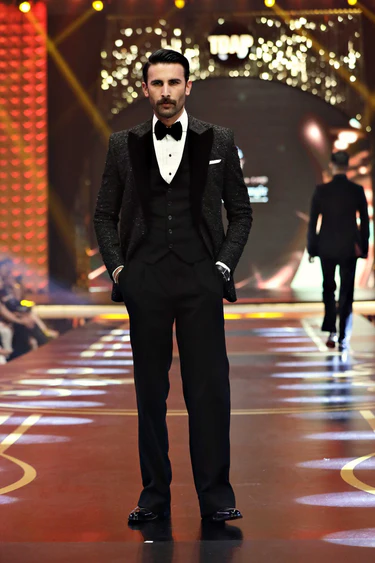
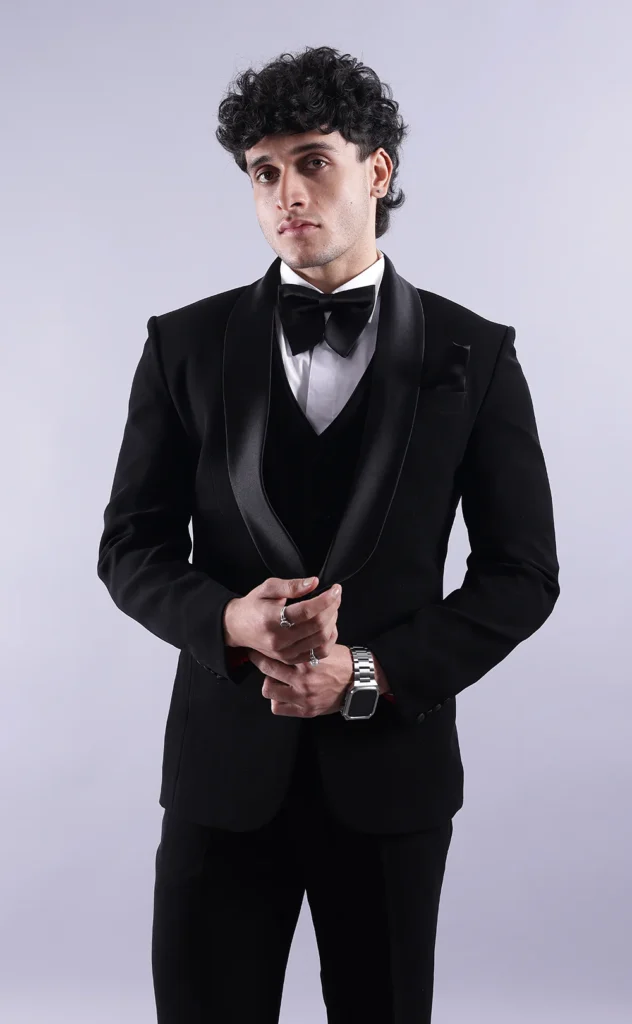
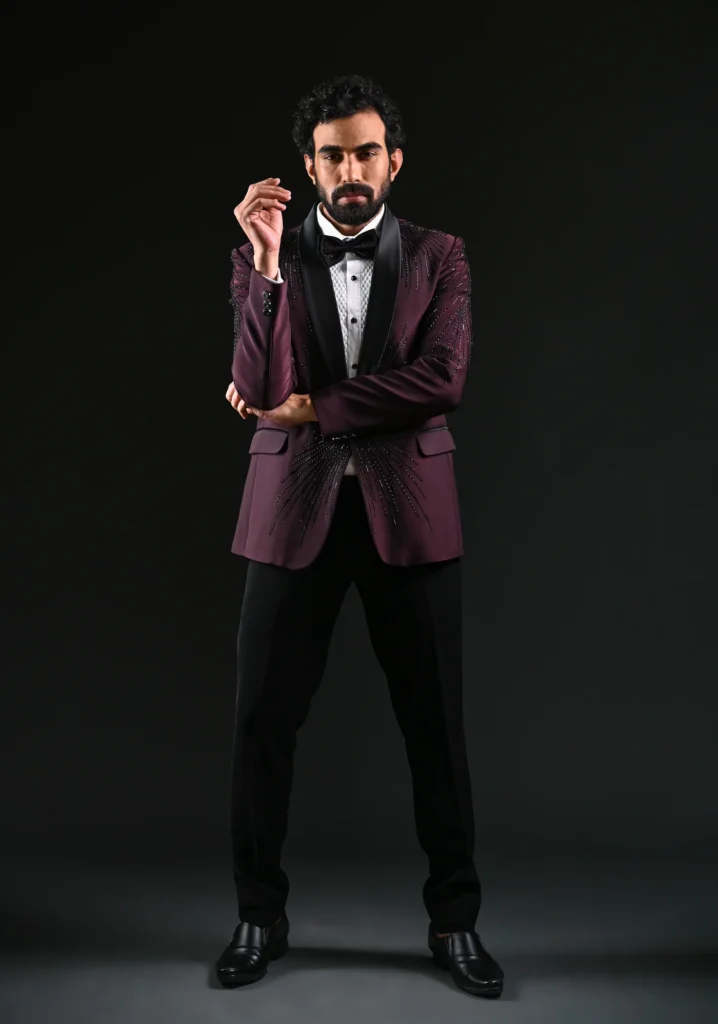
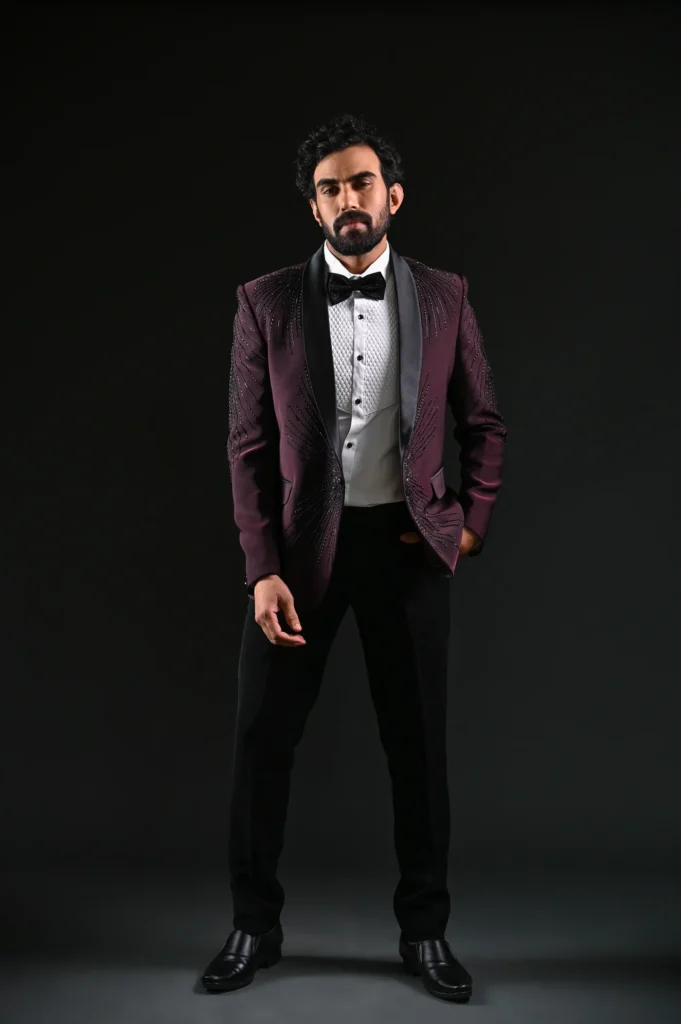
Suit Style Inspirations
A suit is versatile, comfortable, and customizable. From classic cuts to trendy patterns, suits give grooms the freedom to express their personality. Here are a few styles to explore:
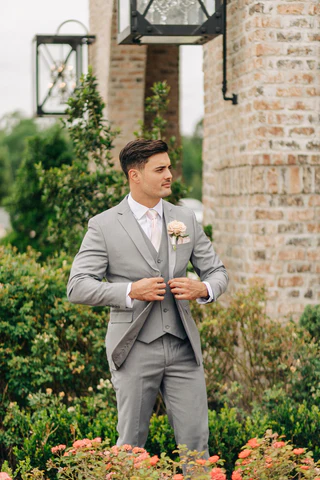
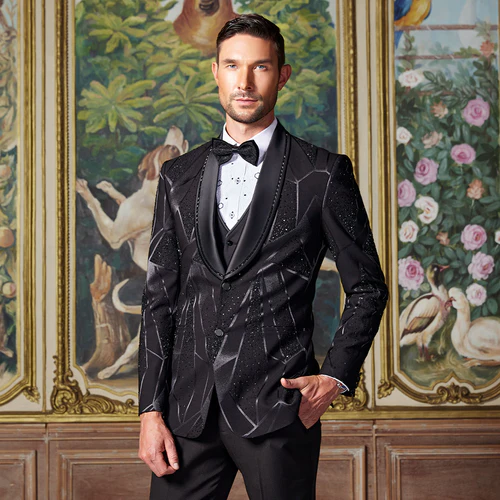
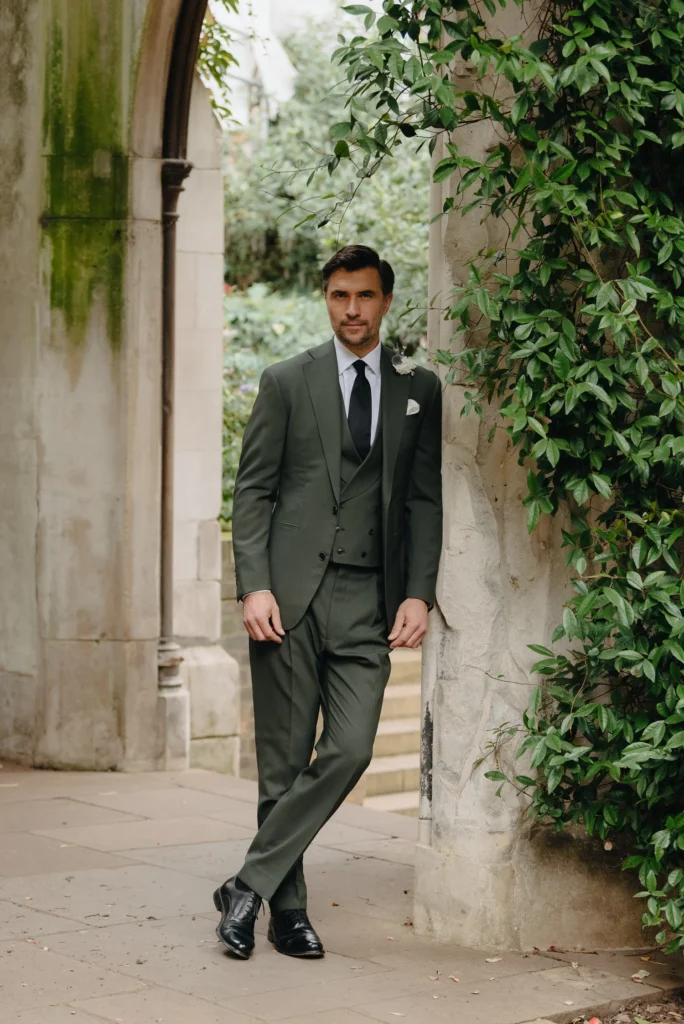
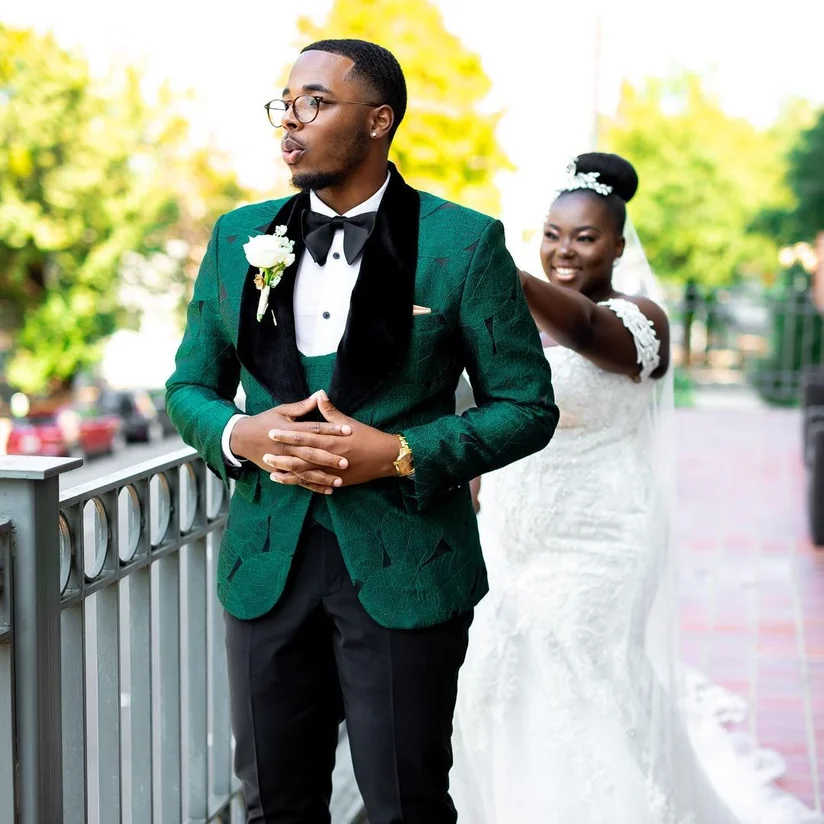
And before we dive deeper, here’s a quick comparison table that highlights the most important differences between a suit & a tux at a glance:
Tuxedo vs Suit: The Difference
| Feature | Suit | Tuxedo |
|---|---|---|
| Occasion | Semi-formal to formal; daytime weddings, office wear, cocktail events | Formal / black-tie events, evening weddings, galas |
| Tie Options | Necktie or bow tie | Bow tie (traditional) |
| Jacket Lapels | Made from same fabric as the suit (wool, linen, blends) | Satin or grosgrain lapels; more sheen and contrast |
| Trousers | Plain fabric, may have cuff or no cuff | Satin stripe running down the leg, no cuff |
| Shirts | Standard dress shirts in cotton, plain or patterned | Tuxedo shirt with pleats or bib front, usually white |
| Neckwear | Necktie, slim tie, or even no tie for casual look | Bow tie (traditional), sometimes black tie |
| Accessories | Pocket square, tie pin, belt, cufflinks (optional) | Cummerbund or waistcoat, suspenders, cufflinks, shirt studs |
| Shoes | Leather oxfords, derbies, loafers | Patent leather shoes or highly polished oxfords |
| Formality Level | Versatile — can go from office to reception depending on styling | Strictly formal — usually reserved for evenings and black-tie dress codes |
| Colors | Wide variety (navy, grey, beige, even pastels) | Mostly black or midnight blue (though modern tuxedos add color options) |
| Modern Trends | Slim-fit, pastel suits, patterned blazers | Shawl lapel tuxedos, colored dinner jackets, velvet jackets |
| Rental vs Ownership | Commonly owned and tailored; staple for most men | Often rented unless you attend many black-tie events |
Now, let’s look closer at these differences in detail with team Plannersy.
The Basics: What is a Suit?
A suit is essentially the “all-rounder” of menswear. It’s made of the same fabric from head to toe — jacket, trousers, and sometimes a matching waistcoat. Suits are incredibly versatile:
- Wear a navy or grey suit to the office.
- Swap in a pocket square and tie, and it’s ready for a wedding.
- Lose the tie, and you’re good for a semi-formal cocktail party.
That’s why most men own at least one well-tailored suit. It’s the wardrobe workhorse.
The Basics: What is a Tuxedo?
A tuxedo, also called a dinner jacket, is a more ceremonial outfit. Traditionally, it’s the dress code for black-tie events — formal occasions that happen after 6 PM.
The tuxedo is immediately recognizable by its satin accents:
- Satin lapels on the jacket
- Satin stripe on the trousers
- Satin-covered buttons
Pair it with a bow tie and tuxedo shirt, and you instantly look dressed for a gala or a black-tie wedding. Unlike suits, tuxedos are less flexible – you wouldn’t wear one to the office or a daytime event.
When to Wear a Tuxedo vs When to Wear a Suit
Wear a tuxedo if:
- You’re having a black-tie wedding
- The ceremony is in the evening (after 6 PM)
- You want a James Bond vibe in your photos
- The dress code says “formal” or “black tie”
Wear a suit if:
- It’s a daytime or outdoor wedding
- You want something versatile to wear again later
- You prefer a more relaxed yet sharp look
- The theme is rustic, boho, or semi-formal
Styling Tips When Wearing a Tux or a Suit in Your Wedding
Looking sharp is more than just picking a tux vs suit – it’s about how you carry the look. Always keep these styling tips in mind:
- Match your outfit’s formality with the bride’s gown: a ballgown pairs better with a tux, while a lighter gown works well with a suit.
- Think about your venue: tuxedos look best in hotels, banquet halls, and evening venues, while suits fit outdoor or daytime settings.
- Experiment with colors: midnight blue, deep burgundy, or even ivory tux jackets add personality without breaking tradition.
- Shoes matter: tuxedos demand patent leather or highly polished shoes, while suits allow brown, tan, or textured finishes.
- Pocket squares & boutonnieres: small details elevate your entire look.
- Tailoring is non-negotiable: even the most expensive tux looks sloppy if it doesn’t fit right.
- Coordinate with groomsmen – they don’t have to match exactly, but keep the overall palette and vibe aligned.
- Comfort counts – don’t pick a starched tuxedo shirt if you’re not used to stiff collars.
- Personal flair – patterned socks, custom cufflinks, or embroidered initials add a touch of personality.
- Photo test – try your outfit in different lights and settings before the wedding day to see how it looks in pictures.
Mistakes to Avoid
Many grooms unknowingly break style rules that can clash with their wedding vibe. Here are the most common ones:
- Wearing a tuxedo at a daytime wedding – tuxedos are strictly evening/formal.
- Mixing tux elements with suits – e.g., cummerbund with a suit jacket (big no).
- Poor fit – oversized jackets or baggy trousers ruin the entire look.
- Clashing with the wedding theme – a velvet outfit at a beach wedding won’t feel right.
- Over-accessorizing – bow tie, flashy pocket square, lapel pin, chain, AND boutonniere together? Keep it balanced.
- Wrong shoes – pairing sneakers with a tux or suit (unless it’s a quirky theme) or wearing casual shoes with a formal suit.
- Ignoring season/weather – heavy wool tuxedos in humid summer weddings are uncomfortable.
- Not considering the bride’s dress – you don’t want to look underdressed or overdressed next to her.
- Renting without tailoring – rented suits/tuxes often need adjustments; skipping this step = sloppy fit.
- Last-minute shopping – waiting until the week of the wedding can lead to limited options and poor fits.
Final Thoughts by Team Plannersy
At the end of the day, the choice between a tuxedo and a suit depends on your wedding theme, dress code, and personal comfort.
Both can make you look incredible – and what matters most is confidence and fit.
If your wedding leans formal and glamorous, go tux. If it’s relaxed, intimate, or outdoors, a suit will never fail you.
Team Plannersy
Related Reads from Team Plannersy
| Article Title | Description |
|---|---|
| Business Suit vs Wedding Suit | Confused about wearing a business suit for your wedding? Learn how wedding suits differ in style, fit, and formality. |
| Wedding Group Name Ideas | 150+ creative and fun wedding group name ideas for WhatsApp, chat, bridesmaids, groomsmen, and more. |
| Creative Wedding Send-Off Ideas | From sparklers to eco-friendly confetti, discover memorable ways to end your big day in style. |


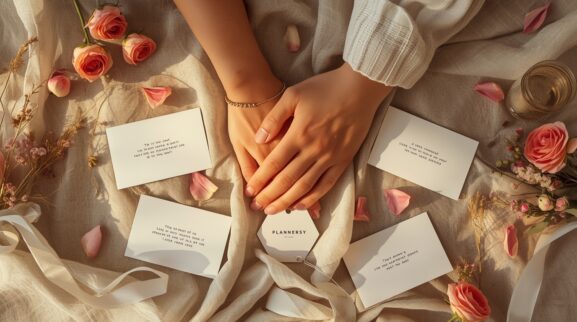
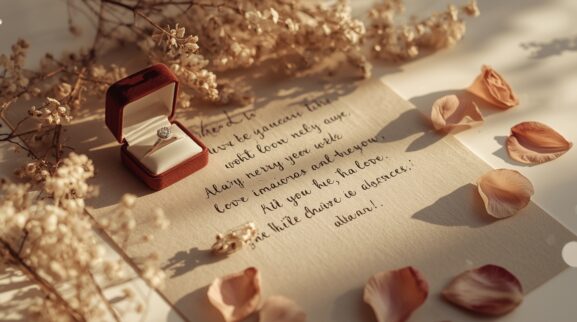
Pingback: Semi-Formal Wedding Attire: How to Get it Right & What to Wear - Plannersy